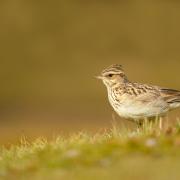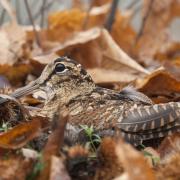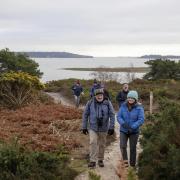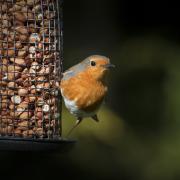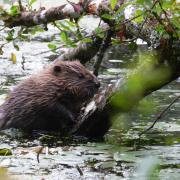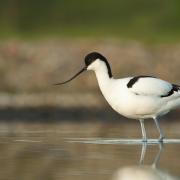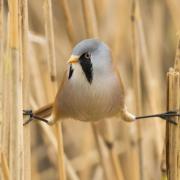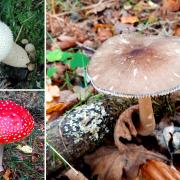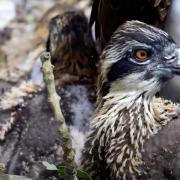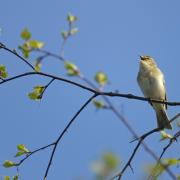Wild about Dorset: November 2013
High on a tranquil down in the heart of Dorset is a new bench seat, made by local woodsman, Roger Lannigan, from which there are lovely views over Milton Abbey and beyond to the Purbecks. It has been placed there in memory of the late Angela Hughes OBE who donated this nature reserve, Greenhill Down, to Dorset Wildlife Trust’s (DWT) in 2004. Angela, a champion of conservation, was a leading light in the Trust’s formative years; she became its Vice President, and was also a founding member of the Portland Bird Observatory.
The 30 acres chalk escarpment that forms the reserve, lying just south of Bulbarrow Hill, was part of the Milton Abbey deer park in the 18th Century. Greenhill Down is a favoured habitat for much rare wildlife including both the brown argus and green hairstreak butterflies, the latter found at the scrub and gorse edges. The restored dewpond on the reserve’s western edge is home to great crested newts, as well as smooth and palmate newts. In summer dragonflies, such as hawkers and chasers, hover over the water, and damselflies include the blue-bodied, azure and large red.
A belt of tall beeches stretching along the steep northern boundary, and some fine veteran ashes and oaks in the lower areas ensures that there is a rich variety of bird life, including bullfinches and spotted flycatchers. The reserve is also a very good site for dormice.
The reserve lies within the South Wessex Downs Environmentally Sensitive Area and part is a Site of Nature Conservation Interest. Despite its particularly rural location, wartime memories can still be evoked by two craters on the reserve, impressions made perhaps by jettisoned bombs from a hounded enemy aircraft. Giles Harbottle
For more information about this nature reserve please contact DWT on 01305 264620, or visit the website dorsetwildlifetrust.org.ukButterfly of the month
In August this year, two (possibly three) monarchs were seen at the Subtropical Gardens in Abbotsbury. The homeland of the monarch (Danaus plexippus) is North and Central America, so what is it doing in Dorset? One view is that the butterflies are blown off course on migration and carried across the Atlantic by high altitude winds. However, during the 19th century this insect colonised the Canaries, Madeira and Southern Spain. The Spanish population is found between Gibraltar and Cadiz and at its last peak, in 2011, 2,573 individuals were recorded there.
One monarch found near Sherborne was checked for its DNA and this was found to match that of the European population. Don’t expect it to breed here though – its food plants, milkweeds, are found only in places like Kew gardens. Philip Howse
Wildlife Event of the Month - 29 November: Screening of Tiger
The award-winning filmmaker Hugh Miles, returns to the Allendale Centre in Wimborne to show his BAFTA award winning film Tiger about a tigress called Lakshmi which Hugh developed a very special bond with in order to film her raising her three cubs. In addition there will be an exclusive screening of his new film about the River Allen which runs close to his Dorset home. Money raised will go to the River Allen project. Doors open at 7pm for 7.30pm start. Book on line at dorsetwildlifetrust.org.uk/hughmilesfilm or call 01305 264620.








